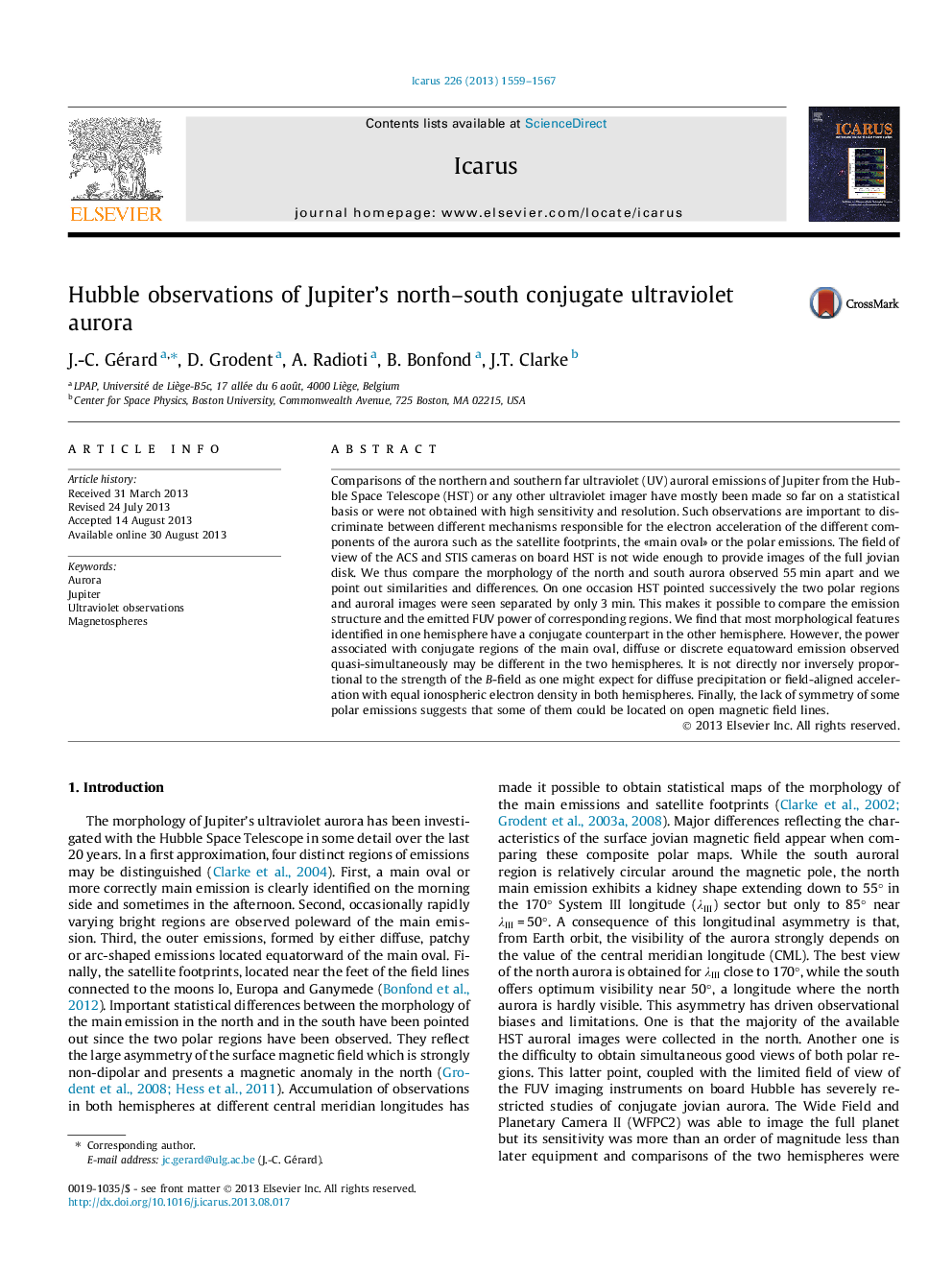| Article ID | Journal | Published Year | Pages | File Type |
|---|---|---|---|---|
| 10701400 | Icarus | 2013 | 9 Pages |
Abstract
Comparisons of the northern and southern far ultraviolet (UV) auroral emissions of Jupiter from the Hubble Space Telescope (HST) or any other ultraviolet imager have mostly been made so far on a statistical basis or were not obtained with high sensitivity and resolution. Such observations are important to discriminate between different mechanisms responsible for the electron acceleration of the different components of the aurora such as the satellite footprints, the «main oval» or the polar emissions. The field of view of the ACS and STIS cameras on board HST is not wide enough to provide images of the full jovian disk. We thus compare the morphology of the north and south aurora observed 55 min apart and we point out similarities and differences. On one occasion HST pointed successively the two polar regions and auroral images were seen separated by only 3 min. This makes it possible to compare the emission structure and the emitted FUV power of corresponding regions. We find that most morphological features identified in one hemisphere have a conjugate counterpart in the other hemisphere. However, the power associated with conjugate regions of the main oval, diffuse or discrete equatoward emission observed quasi-simultaneously may be different in the two hemispheres. It is not directly nor inversely proportional to the strength of the B-field as one might expect for diffuse precipitation or field-aligned acceleration with equal ionospheric electron density in both hemispheres. Finally, the lack of symmetry of some polar emissions suggests that some of them could be located on open magnetic field lines.
Related Topics
Physical Sciences and Engineering
Earth and Planetary Sciences
Space and Planetary Science
Authors
J.-C. Gérard, D. Grodent, A. Radioti, B. Bonfond, J.T. Clarke,
